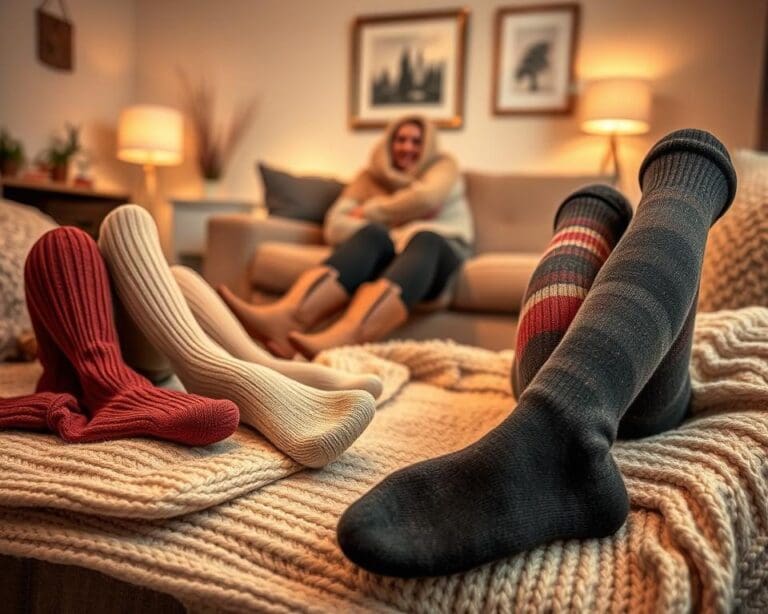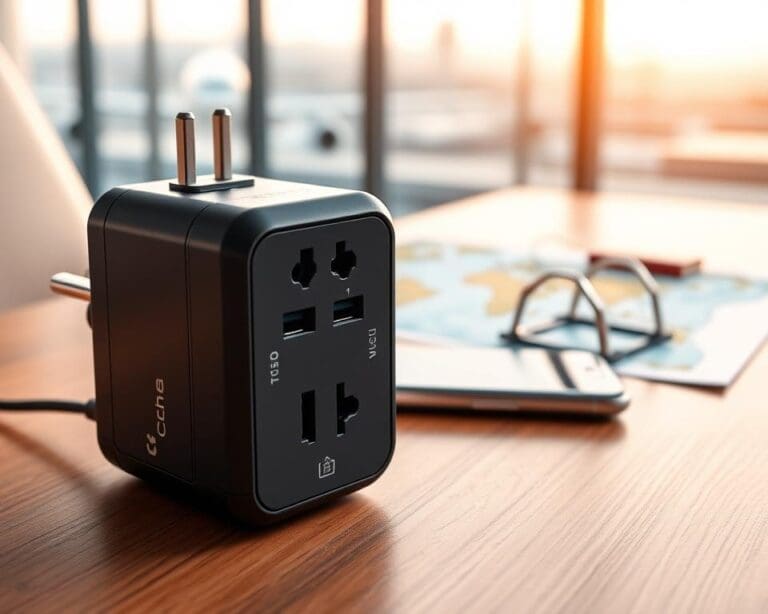Achieving a smooth wall finish can elevate the look of any room, making it feel fresher and more welcoming. However, getting that perfect finish requires more than just applying a coat of paint. It demands the right wall painting techniques and a bit of preparation.
With the right approach, you can avoid common pitfalls like streaks, uneven coverage, and roller marks. Mastering the art of wall painting not only enhances the aesthetic appeal of your space but also protects your walls from damage.
Key Takeaways
- Preparation is key to a smooth finish.
- Using the right tools can make a significant difference.
- Technique matters: the right rolling or brushing method can prevent streaks.
- A smooth finish requires patience and multiple thin coats.
- Finishing touches can make or break the final look.
The Importance of a Smooth and Even Wall Finish
Achieving a smooth and even wall finish is crucial for the overall aesthetic of any room. A well-painted wall can elevate the ambiance of your home, making it feel more welcoming and polished.
A smooth finish is not just about looks; it also reflects the quality of workmanship. Whether you’re painting a single room or your entire house, the finish can make a significant difference in how the space feels.
Why Professional-Looking Results Matter
A professional-looking finish is important because it adds value to your home. It shows attention to detail and care in maintaining your property. Moreover, a smooth finish is more durable and easier to clean, making it a practical choice for homeowners.
Professional-looking results also boost your confidence in the space, making it more enjoyable to spend time in the room.
Common Challenges in Wall Painting
Despite the importance of a smooth finish, many homeowners face challenges when painting their walls. Common issues include uneven coverage, roller marks, and streaks. These problems can be frustrating and may require additional time and resources to fix.
Understanding these challenges is the first step to overcoming them. With the right techniques and tools, you can achieve a smooth and even finish that enhances your home’s beauty.
Essential Tools and Materials for Perfect Wall Painting
The key to a successful wall painting project lies in the quality of your tools and materials. Having the right supplies ensures a professional-looking finish and makes the painting process smoother.
Quality Paint Selection
Choosing the right paint is crucial for achieving the desired look and durability. Consider factors such as the type of surface you’re painting and the level of moisture exposure.
Choosing the Right Finish
Different finishes offer varying levels of sheen and durability. For instance, flat finishes are ideal for low-traffic areas, while satin or semi-gloss finishes are better suited for high-traffic areas or surfaces that need frequent cleaning.
Color Considerations
When selecting a color, consider the room’s lighting and decor. It’s also a good idea to test the paint with a sample swatch before committing to a specific shade.
Brushes, Rollers, and Applicators
The right brushes and rollers can significantly impact the quality of your paint job. Choose brushes that are suitable for your paint type and rollers that match your surface texture.
Additional Supplies You’ll Need
Other essential supplies include painter’s tape, drop cloths, and sandpaper. These tools help prepare your surface and protect your surroundings from paint spills.
| Supply | Purpose |
|---|---|
| Painter’s Tape | Creating sharp edges and lines |
| Drop Cloths | Protecting floors and furniture |
| Sandpaper | Smoothing out surfaces |
Preparing Your Walls Before Painting
Proper wall preparation is the key to a successful painting project, ensuring a professional-looking result. This involves several crucial steps that help achieve a smooth and even finish.
Cleaning Surfaces Thoroughly
Before painting, it’s essential to clean the walls thoroughly to remove dirt, grime, and grease. Use a mild detergent mixed with water to wipe down the surfaces. This step is crucial for ensuring the paint adheres well to the wall.
- Mix 1 cup of mild detergent with 1 gallon of warm water.
- Dip a soft cloth into the solution, wring it out thoroughly, and wipe the walls from top to bottom.
- Rinse the cloth frequently to avoid spreading dirt.
Repairing Holes, Cracks, and Imperfections
Repairing any damage to the walls is vital for a smooth finish. This includes filling holes and cracks.
Using Spackling and Putty
For small holes and cracks, use spackling compound or putty. Apply the compound with a putty knife, smoothing it out to fill the hole or crack. Allow it to dry completely before sanding.
Dealing with Larger Damage
For larger holes or more significant damage, you may need to use a patching compound or even replace the drywall section. Ensure the area is clean and dry before applying any repair compound.
Sanding for Smoothness
After repairs are dry, sand the entire wall to achieve a smooth surface. Use a fine-grit sandpaper and work in a circular motion to avoid creating scratches. Wipe down the walls with a damp cloth to remove dust before painting.
Proper Room Preparation Techniques
To achieve professional-looking results, preparing your room is just as important as choosing the right paint. Proper preparation helps prevent damage to your floors, furniture, and fixtures, making the painting process smoother and less stressful.
Protecting Floors and Furniture
Protecting your floors and furniture from paint spills and splatters is crucial. Use drop cloths or plastic sheets to cover large areas, and consider using furniture sliders to move items away from walls. For added protection, you can also use masking film or painter’s tape to seal off edges and corners.
- Use drop cloths or plastic sheets to cover floors and furniture.
- Remove or cover furniture and fixtures to prevent damage.
- Secure drop cloths with tape to prevent them from shifting.
Removing or Covering Fixtures and Hardware
Removing or covering fixtures and hardware is essential for a smooth painting process. Take out the light switch plates, outlet covers, and any other removable hardware. For items that can’t be removed, use painter’s tape or masking film to cover them. This will help you achieve clean, sharp edges around these areas.
- Remove light switch plates and outlet covers.
- Cover remaining hardware with painter’s tape or masking film.
- Use a screwdriver to remove any other fixtures.
Hoe Schilder Je Je Muren Strak en Egaal: The Priming Process
Before you pick up that paintbrush, understand the importance of priming your walls for a professional finish. Priming is a critical step that can make a significant difference in the final result of your painting project.
Why Primer is Essential
Primer is more than just a preparatory coat; it’s a crucial layer that ensures your paint adheres well to the wall surface. It helps to create a uniform base, covering stains, and reducing the appearance of imperfections. By using a primer, you can significantly improve the durability of your paint job, making it last longer.
Moreover, primer can help in reducing the number of paint coats needed, saving you time and money. It’s especially important when dealing with dark colors or bold patterns, as it helps to achieve an even color distribution.
Choosing the Right Primer
Selecting the appropriate primer for your project is vital. There are various types of primers available, each designed for specific surfaces and conditions. For instance, if you’re dealing with a surface that has stains or water damage, a stain-blocking primer is the way to go. For new drywall, a drywall primer is recommended.
Consider the material of your walls as well; different primers work better on wood, metal, or drywall. Always read the label to ensure you’re getting the right primer for your needs.
Application Techniques for Even Coverage
Applying primer correctly is just as important as choosing the right one. Start by preparing your walls, ensuring they’re clean and dry. Use a roller for large areas and a brush for edges and corners. Work in sections to maintain even coverage, and avoid applying too much primer at once, as this can lead to drips and unevenness.
Allow the primer to dry completely according to the manufacturer’s instructions before proceeding with painting. This patience will pay off with a smoother, more professional-looking finish.
Mastering Paint Application Techniques
Achieving a professional-looking finish when painting walls requires mastering various paint application techniques. The right techniques can make a significant difference in the outcome of your painting project, ensuring a smooth, even coat that enhances the overall appearance of your walls.
The W-Method for Roller Application
The W-method is a popular technique used for roller application, particularly useful for large, open areas. This method involves applying paint in a “W” or “M” pattern to ensure even coverage and prevent streaks. By doing so, you can achieve a uniform layer of paint without missing any spots. To implement this technique effectively, use a high-quality roller with the appropriate nap length for your paint type.
Brush Techniques for Edges and Corners
While rollers are great for covering large areas, brushes are essential for painting edges, corners, and trim. Proper brush techniques can help you achieve a clean, precise finish. When painting around trim, use a high-quality angled brush to cut in along the edges.
Cutting In Around Trim
Cutting in around trim requires a steady hand and a good-quality angled brush. Start by loading the brush with the right amount of paint, then carefully paint along the edge where the trim meets the wall. Use a smooth, steady motion to maintain a straight line.
Handling Ceiling Edges
When painting ceiling edges, it’s crucial to maintain a straight line and avoid getting paint on the adjacent walls. Use a brush with a comfortable grip and a sharp edge to achieve a clean finish. Work in small sections to keep the paint wet and blend the edges seamlessly.
Maintaining Wet Edges
Maintaining wet edges is critical to achieving a smooth, even finish. This involves ensuring that the paint on the edges of your painting area remains wet until you blend it with the rest of the paint. To do this, work in sections and apply paint in a continuous motion, feathering the edges to blend them with the surrounding area. This technique helps prevent visible lines and ensures a professional-looking result.
Achieving Consistent Color and Texture
To ensure your walls look their best, it’s essential to understand the factors that contribute to a uniform finish. Achieving consistent color and texture is crucial for a professional-looking paint job, and it involves several key steps.
Proper Paint Mixing Methods
One of the most critical steps in achieving a uniform finish is mixing your paint correctly. It’s vital to mix the paint thoroughly in the can, ensuring that the color is consistent throughout. Always use a paint mixer or a stirrer that is long enough to reach the bottom of the can to prevent any settling or separation of the paint components.
When mixing, start by stirring the paint gently to avoid creating air bubbles. Gradually increase the stirring speed to ensure all the pigment is well incorporated. If you’re using multiple cans of paint, mix them together in a large container to ensure the color is consistent across the entire area you’re painting.
Managing Paint Thickness
The thickness of your paint can significantly affect the finish. Paint that is too thick can lead to uneven coverage and texture, while paint that is too thin may require multiple coats. Check the manufacturer’s recommendations for the ideal viscosity, and adjust as necessary by adding a small amount of water or paint thinner.
| Paint Type | Ideal Viscosity | Adjustment Method |
|---|---|---|
| Latex | Thinner than oil-based | Add water |
| Oil-based | Thicker than latex | Add paint thinner |
Techniques for Uniform Application
Applying paint uniformly is just as important as mixing it correctly. Use a high-quality roller and brush to ensure even coverage. When using a roller, work in sections, applying paint in a ‘W’ or ‘M’ pattern to prevent streaks. Maintain a wet edge by painting in sections that overlap slightly, ensuring that the paint blends smoothly.
For edges and corners, use a brush to apply paint carefully, feathering the edges to blend with the surrounding area. This technique helps prevent visible lines or demarcations.
Troubleshooting Common Wall Painting Problems
Wall painting can be fraught with challenges, but knowing how to troubleshoot can save time and effort. Even with careful preparation, issues like drips, roller marks, and uneven coverage can occur. This section will guide you through practical solutions to these common problems, ensuring your wall painting project achieves a smooth and even finish.
Fixing Drips and Runs
Drips and runs can be frustrating, but they can be fixed with the right approach. If you notice a drip while the paint is still wet, use a brush or roller to smooth out the area immediately. For dried drips, gently sand the area with fine-grit sandpaper until it’s smooth, then touch up with paint. To prevent drips, always maintain a wet edge when painting and avoid overloading your brush or roller.
Addressing Roller Marks and Streaks
Roller marks and streaks can detract from the overall appearance of your paint job. To minimize these issues, use a high-quality roller cover and work in sections, maintaining a wet edge. If roller marks appear, they can often be smoothed out with a lightly loaded roller or a brush while the paint is still wet. For dried roller marks, sanding and touching up may be necessary.
- Use the correct roller nap length for your paint type.
- Work in small sections to maintain even coverage.
- Inspect your work regularly to catch issues early.
Dealing with Uneven Coverage
Uneven coverage can result from various factors, including insufficient paint or uneven application. To address uneven coverage, assess the affected area and determine if additional coats are needed. Always mix paint thoroughly before application to ensure color consistency. If some areas remain patchy after a second coat, consider using a primer to enhance paint adhesion and uniformity.
Multiple Coat Strategies for Flawless Results
To get a professional finish, understanding multiple coat strategies is crucial. Applying multiple thin coats of paint is generally better than applying one thick coat. This approach helps prevent drips, unevenness, and ensures a smooth finish.
Determining How Many Coats You Need
The number of coats required depends on several factors, including the color and type of paint, the surface being painted, and the desired finish.
As a general rule, most walls require at least two coats of paint. Dark colors or bold hues may require additional coats to achieve an even finish.
| Surface Type | Typical Number of Coats |
|---|---|
| Smooth, previously painted walls | 2 |
| Rough or unpainted surfaces | 3 or more |
Proper Drying Time Between Coats
Allowing the correct drying time between coats is vital for a flawless finish. Check the manufacturer’s instructions for the recommended drying time, as this can vary depending on the type of paint and environmental conditions.
Generally, latex paint dries to the touch within an hour, but it’s best to wait at least 2 hours before applying a second coat.
Techniques for Second and Third Coats
When applying subsequent coats, maintain the same technique used for the first coat. Use a ‘W’ or ‘M’ pattern with your roller to ensure even coverage, and work in sections to maintain wet edges.
This helps prevent visible roller marks and streaks.
By following these multiple coat strategies, you can achieve a professional-looking finish that enhances the beauty of your walls.
Conclusion: Enjoying Your Perfectly Painted Walls
Now that you’ve completed painting your walls, it’s time to step back and enjoy the fruits of your labor. A smooth and even finish can completely transform the look and feel of a room, making it a welcoming space for relaxation and entertainment.
To get the most out of your newly painted walls, consider a few final tips. Regularly dusting and cleaning your walls will help maintain their appearance and extend the life of the paint job. Additionally, being mindful of potential damage from furniture and fixtures can help prevent scratches and marks.
By following the techniques and strategies outlined in this article, you’ve not only achieved a professional-looking finish but also gained the skills and confidence to tackle future painting projects. Enjoying your painted walls is the perfect reward for your hard work and patience.













